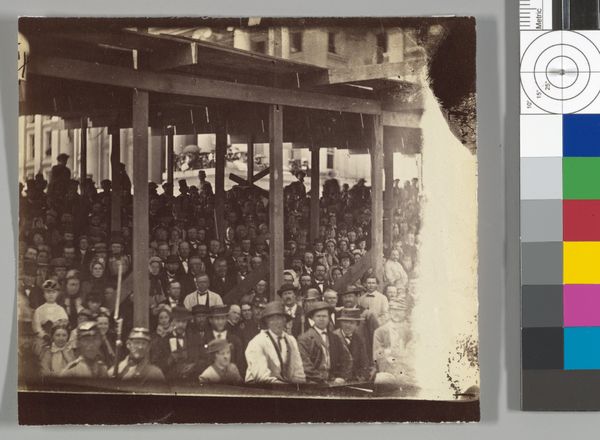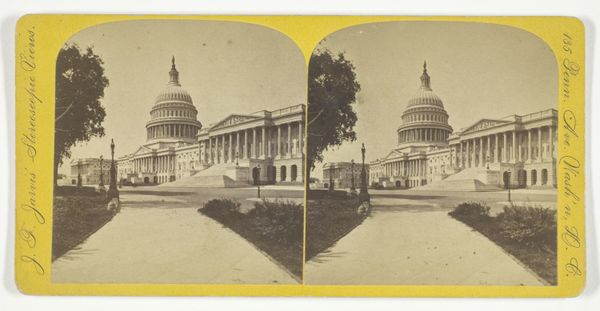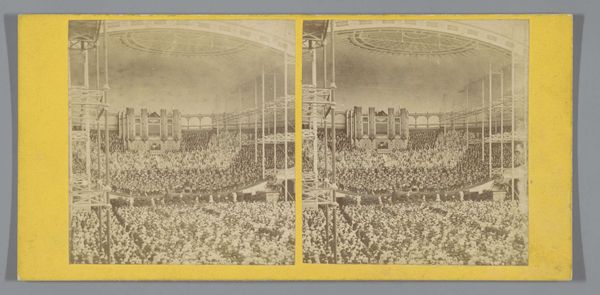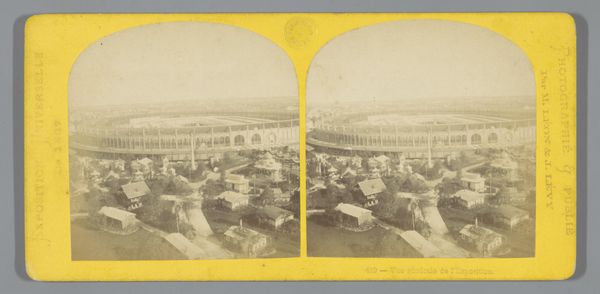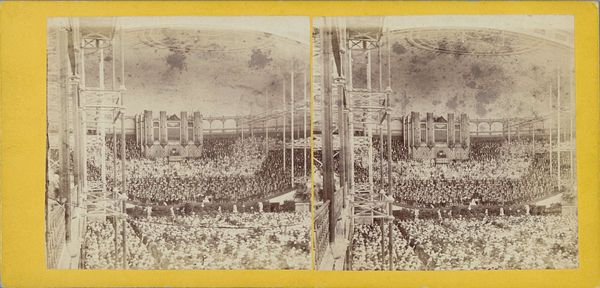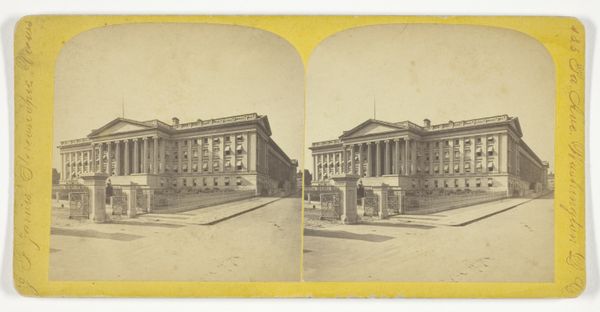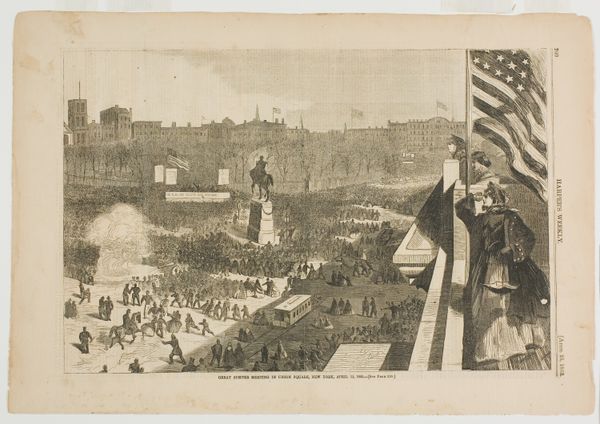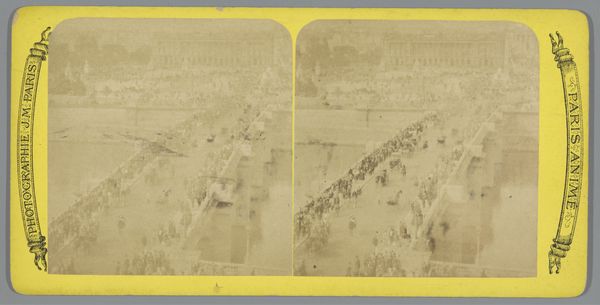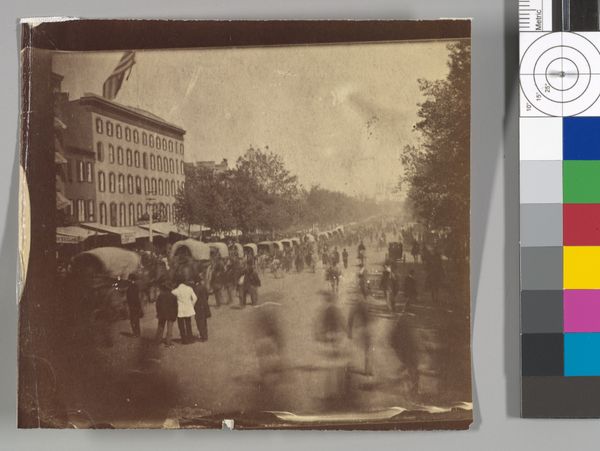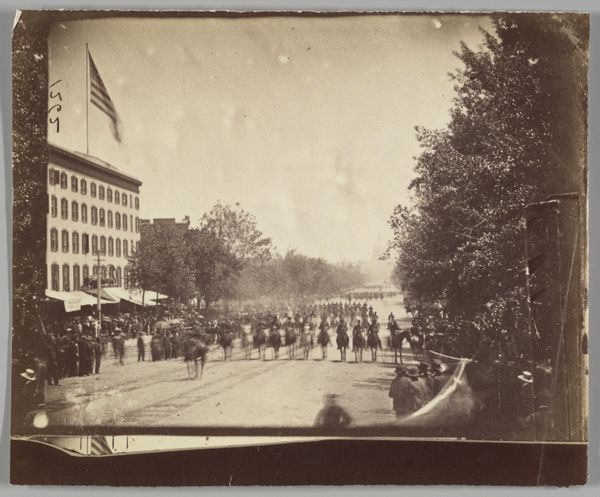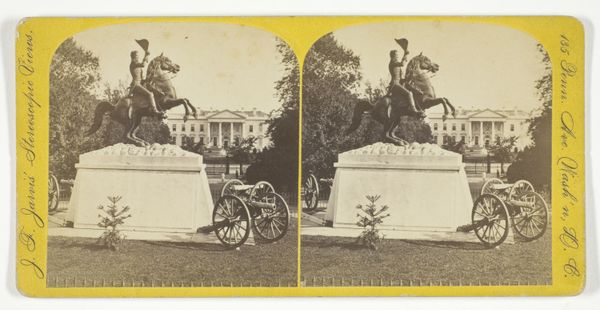
print, photography
#
portrait
#
16_19th-century
# print
#
photography
#
men
#
cityscape
Dimensions: 8 × 7.7 cm (each image); 8.6 × 17.6 cm (card)
Copyright: Public Domain
Editor: So, this is *James Garfield on March 4, 1880*, a photographic print by J.F. Jarvis. The sheer density of the crowd is striking. What's your take on this image? Curator: Well, immediately, the context screams American spectacle. Look at how the American flag dominates the composition. Consider its public role. Presidential inaugurations in the late 19th century became increasingly performative, carefully orchestrated to project an image of national unity and strength, especially important after the divisiveness of the Civil War. What message do you think that photograph is sending? Editor: Probably, "Look how popular the president is!", but did everyone have access to these kinds of images? Curator: Exactly. That is key. Think about the distribution. Photography was becoming more widespread, yet these images reinforced a certain narrative. It was about creating a public memory, a carefully crafted image of political legitimacy. The photograph becomes a tool of power, shaping how people perceive Garfield’s presidency. Do you notice the White House itself in the background? How does the photographer choose to include it? Editor: It's there, but not the focal point, which I think says it's more about the *people* witnessing this event than just the location or institution itself. It's supposed to make viewers feel like *they* are included in this watershed moment in the history. Curator: Precisely. And the placement of the photographer, looking out on the audience and White House makes it the 'ideal' point-of-view, or does it suggest othered viewers were unable to obtain these ‘stereoscopic views’? Editor: Okay, that does complicate the reading of the piece... Seeing it as more of a crafted message changes things. I'll definitely consider the role of public imagery differently now! Curator: Agreed. It’s crucial to analyze who creates these images and how they are deployed within the larger social and political landscape.
Comments
No comments
Be the first to comment and join the conversation on the ultimate creative platform.

